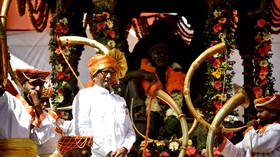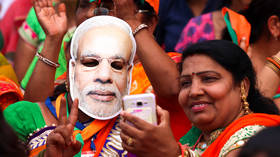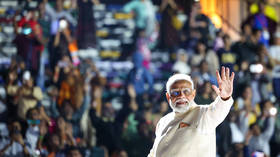Trans Democracy: Five transgender candidates in India’s 2024 election seek to win back the respect they had millenia ago

In the ongoing seven-phase parliamentary election to determine whether Prime Minister Narendra Modi will get a third term, India’s 970 million voters include over 48,000 transgender people.
And of the 8,039 candidates nationwide – a four-fold rise from 1,874 in the 1952 election, India’s first – three candidates are transgender; a fourth dropped out. And a fifth is hoping to sit in the state assembly of Andhra Pradesh in south India, for which voting was on May 13.
India has long had a tolerance for transgender persons, however this has nothing to do with the Western LGBTQ+ movement – indeed, Indians are merely trying to overcome the colonial-era laws that tried to stamp out its own ancient traditions on the 'third gender'.
Ancient India and Trans people
The transgender community comprises Hijras, eunuchs, Kothis, Aravanis, Jogappas, Shiv-Shakthis, and more. Evidence for the existence of third-gender people can be found in Hindu holy texts like the Ramayana and Mahabharata.
In Hinduism, Jainism, and Buddhism, and further back in Vedic culture, three genders were recognized. The Vedas (1500 BCE to 500 BCE) describe individuals as one of three categories according to one’s nature (‘prakrti’). These are also spelled out in the Kama Sutra (c. 4th century AD) and elsewhere as pums-prakrtistri-prakrti (female nature), and tritiya-prakrti (third-nature).
Various texts suggest that ‘third sex’ individuals were known in pre-modern India and included male-bodied or female-bodied people as well as intersexual. Third sex is also discussed in ancient Hindu law, medicine, linguistics, and astrology.
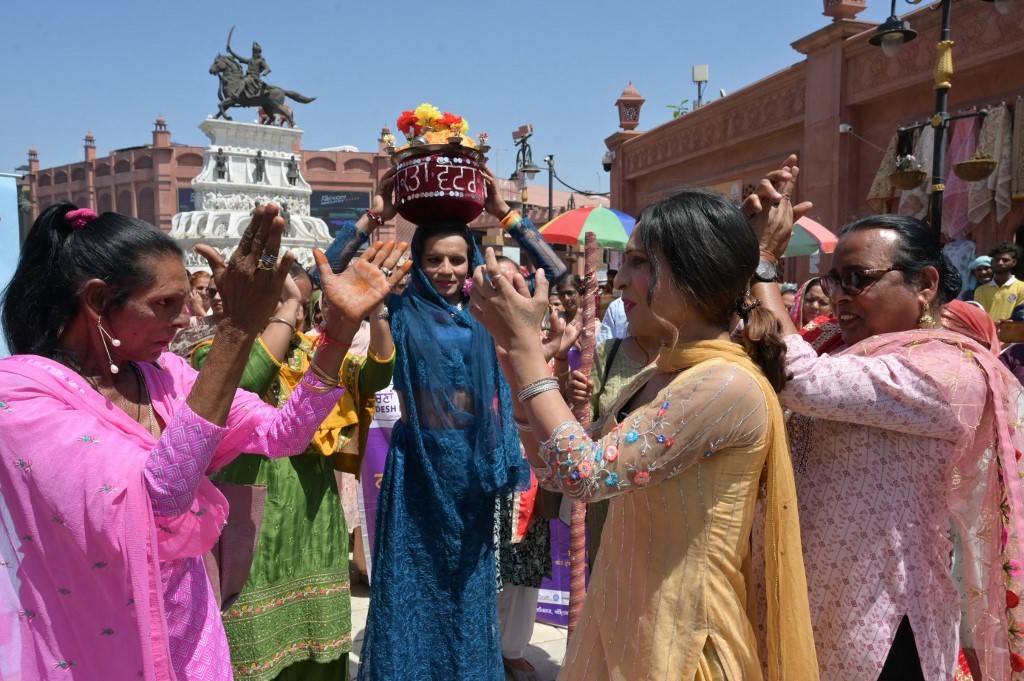
Indian linguist Patanjali’s work on Sanskrit grammar, the Mahabhaya (200 BCE), states that Sanskrit’s three grammatical genders are derived from three natural genders.
The earliest Tamil grammar, the Tolkappiyam (3rd century BCE) also refers to hermaphrodites as a third ‘neuter’ gender (in addition to a feminine category of unmasculine males). In the Puranas, there are also references to three kinds of devas of music and dance: apsaras (female), Gandharvas (male), and kinnars (neuter).
In the Vishnu Purana (orally composed during the 1st millennium BCE), the God Vishnu changes form to become Mohini (enchantress) to fool a group of demons into giving up their elixir.
In the Ramayana (300 BCE), when Lord Rama goes into exile in the forest, the hijras of Ayodhya follow him. In the Mahabharata (400 BCE), there are several instances: in one, the God Krishna, becomes a woman to spend a warrior’s last night with him. The fierce warrior-king Arjuna spends a year in hiding as a female dancing instructor. A warrior Shikhandini changes her sex to become a man, and in battle kills the patriarch Bhishma (who doesn’t put up a fight because she was ‘born a woman’).
Mughal and British periods
Hijras played a famous role in the royal courts of the Islamic world, particularly in the Ottoman empire and the Mughal rule in Medieval India. They rose to become political advisors, administrators, generals as well as guardians of the harems. Hijras were considered clever, trustworthy, and fiercely loyal and had access to all the population, thereby playing a crucial role in the politics of the Mughal era.
At the beginning of the British Raj, hijras accepted protections and benefits from some Indian states through entry into the hijra community.
From the 18th century onwards, the situation changed drastically. In the second half of the 19th century, the British colonial administration vigorously sought to criminalize the hijra community and deny them civil rights. Hijras were considered to be separate castes or tribes in different parts of India by the colonial administration.
The Criminal Tribes Act, of 1871, included all hijra who were concerned with kidnapping and castrating children and dressed like women to dance in public places. The punishment was up to two years imprisonment and a fine or both. This era has made the hijra as vulnerable as they appear in the contemporary world. Though the Act was repealed in 1952, its legacy continues. Many local laws reflect prejudicial attitudes against certain tribes, including against hijras.
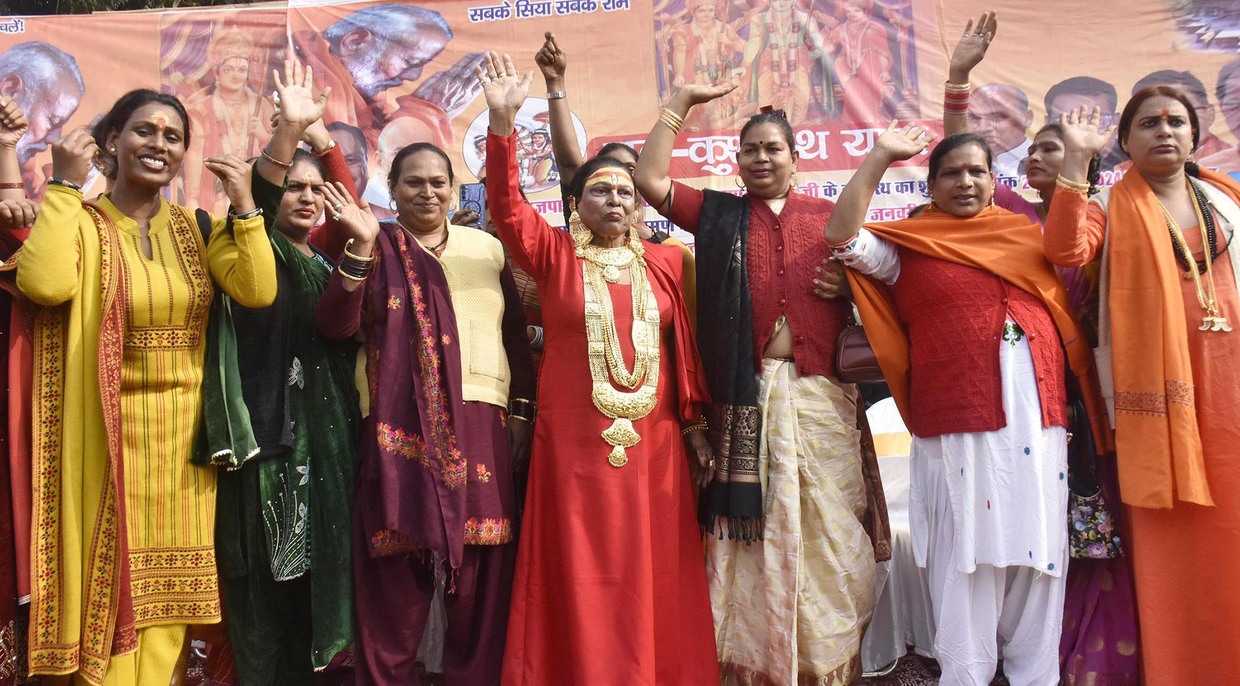
The candidates
“Most transgender people are not able to fight for their rights as they are not educated,” says Rajan Singh, a non-binary contestant in the South Delhi Lok Sabha (lower house) constituency that votes on May 25. Singh is currently undergoing the process of gender reassignment surgery.
“I don’t have a personal aim,” Singh continues. “I want to fight for my community to live by upholding our identity. That fight is the core of my life.”
Besides Rajan Singh, for whom a court recently ordered police protection, the candidates include:
Durga Bai Majhwar, an independent ‘kinnar’ (transgender) candidate in the Damoh constituency of Madhya Pradesh (in central India), which voted on April 26. Durga’s opponents are Rahul Lodhi of the ruling Bharatiya Janata Party (BJP), and the main opposition Congress party’s Sarwar Singh Lodhi.
Then there is Sunaina Singh in Dhanbad, a coal-mining center in Jharkhand, east India. Sunaina is fighting the BJP’s Dulu Mahato and the Congress’s Anupama Singh, and voting is on May 25.
Mahamandaleshwar (the title for a monk) Hemangi Sakhi, was contemplating a challenge to Modi in Varanasi, Uttar Pradesh (UP), India’s most populous state. Varanasi votes on June 1.
The transgender monk is from the far-right Akhil Bharat Hindu Mahasabha, an outfit that is older than the nationalist paramilitary Rashtriya Swayamsevak Sangh (RSS), the BJP’s parent organization. However, Sakhi has been persuaded not to contest after BJP leaders gave an assurance that they would make Modi aware of the concerns of transgender persons.
The only non-parliamentary candidate is Tamanna Simhadri, who is contesting the Pithapuram assembly seat in Andhra Pradesh on behalf of the pro-dalit Bharatiya Chaitanya Yuvajana Party. (Dalits sit at the bottom of India’s unique caste pyramid.)
Tamanna’s main opponents are movie-star-turned-politician Pawan Kalyan, whose Janasena Party is allied with the BJP in the National Democratic Alliance (NDA), and Vanga Geetha of the YSR Congress Party (which is the incumbent state ruling party). Voting took place on May 13.
Tamanna is a trans woman, having undergone gender reassignment surgery.
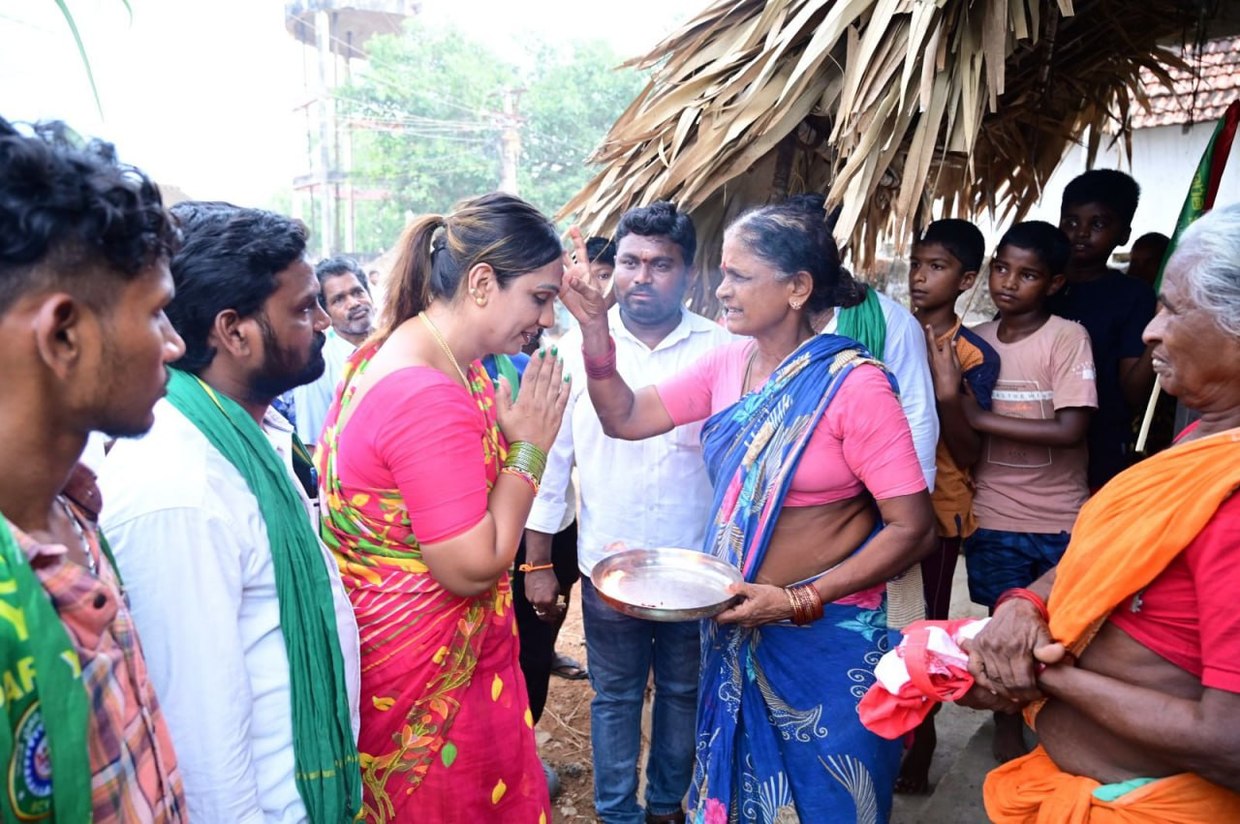
India’s classifications
A ‘transgender’ is a person who no longer identifies with their gender assigned at birth. Those who choose change through surgery or hormones may identify as transsexual.
‘Gender-neutral’ refers to individuals or groups without implying maleness or femaleness.
A ‘eunuch’ is a castrated human male.
The ‘hijra’community is the most common ‘third gender’ in South Asia, though their identity is complex. They are often born male but look and dress in a feminine way. Some hijras are born intersex. Not all prefer the castration ceremony.
Hijras are also known by different names in different communities as Kinnar, Jogtas/Jogappas and Khusras. They number an estimated four million. UP has the most: around 5% of its population.
’Hermaphrodites’have both male and female reproductive organs.
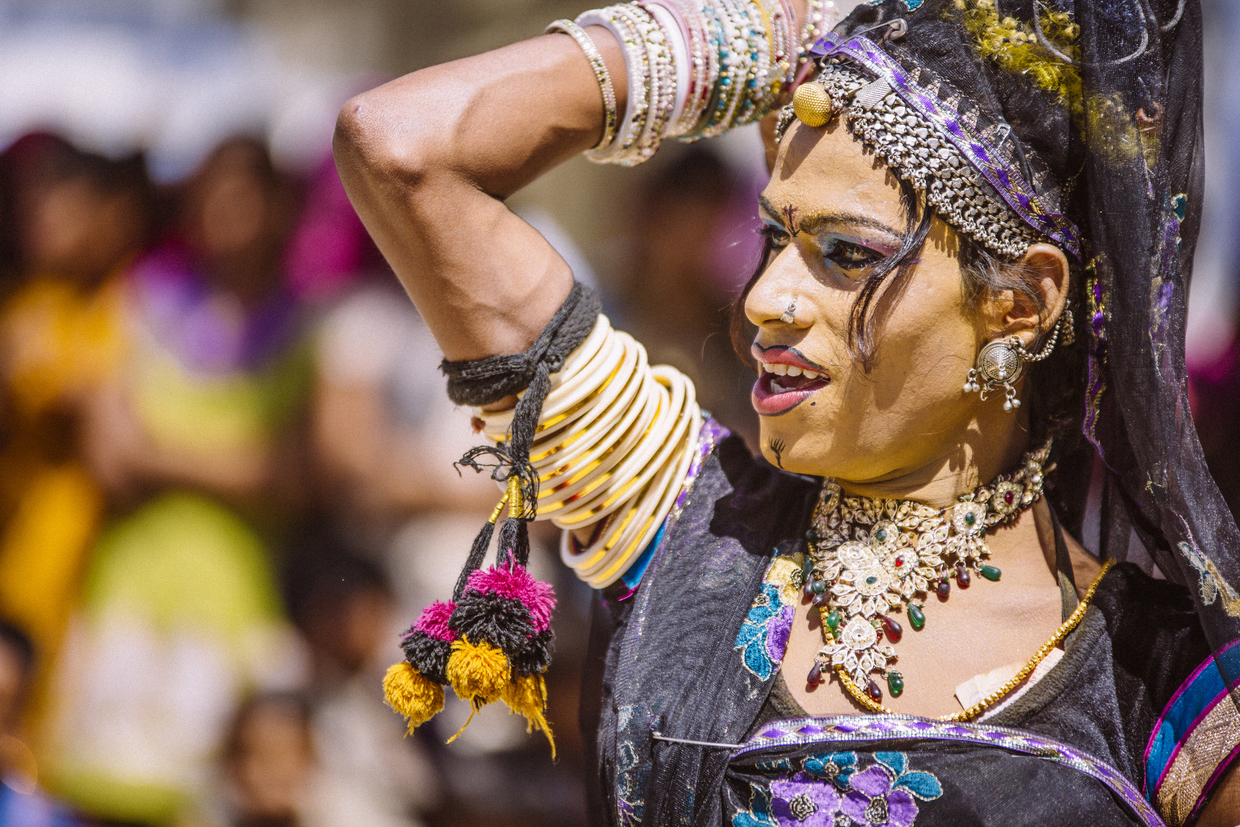
Why fight elections
India’s transgender population has a literacy rate of 56.07%, but India has never had a transgender member of parliament.
“In 77 years of independence, we have been fighting to enter Parliament, to empower ourselves,” Rajan Singh, Delhi’s first-ever neuter-gender candidate, told RT. “Our representation is zero because we have never been brought into the mainstream. Even at 1% reservation there would be six of us in the Lok Sabha.”
Singh (26) is a postgraduate degree holder in Hindi Literature. He was estranged from his family after he ‘came out’ young, and has been supported by political activists. “We are treated as untouchable,” Singh says. “People don’t want to touch us, or marry us. There is no facility for us in the education system.”
But most transgender persons don’t fight for their rights because they’re not educated. “The Constitution has given everyone equal rights,” Singh says. “Those rights would get us back our self-esteem and identity. This is a fight for justice, power, and identity.”
Singh claims a threat to life, therefore the court order for police protection, as a rival party is hostile. “They hate us and body-shame us,” Singh says. “How many votes I get would be a stamp on my identity, self-esteem, and the fact that we are alive.”
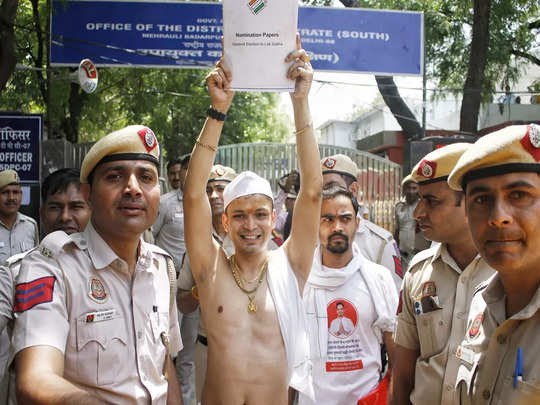
A village leader in the fray
Durga Bai Majhwar (36) was elected India’s first transgender village head (sarpanch) of Kanhwara in Madhya Pradesh, in 2014.
“The people persuaded me to fight elections,” Durga tells RT. “The response was warm, people were happy for a third candidate in the fray as they were disappointed with the other two. They got a new face and blessed me because I am a transgender.”
Durga Bai did not attend school or receive a formal education, but believes that won’t stand in the way. Her family has been supportive. “In the village, I tried to address poverty by providing financial support to build houses, toilets and roads, and address drinking water availability,” Durga Bai says.
Public support
Mahamandaleshwar Hemangi Sakhi’s reason for contesting the election is her party’s direction. She also contested the 2017 UP assembly polls. “I identify with my party’s political objectives,” Sakhi tells RT. The people’s response, she says, was positive.
According to reports, Sakhi was appointed Acharya Mahamandaleshwar in February 2019, and honoured with the title of Bhagwatbhushan Mahamandaleshwar by the Akhil Bharatiya Sadhu Samaj (literally, All India Priests Society). Sakhi has also acted in films and on TV.
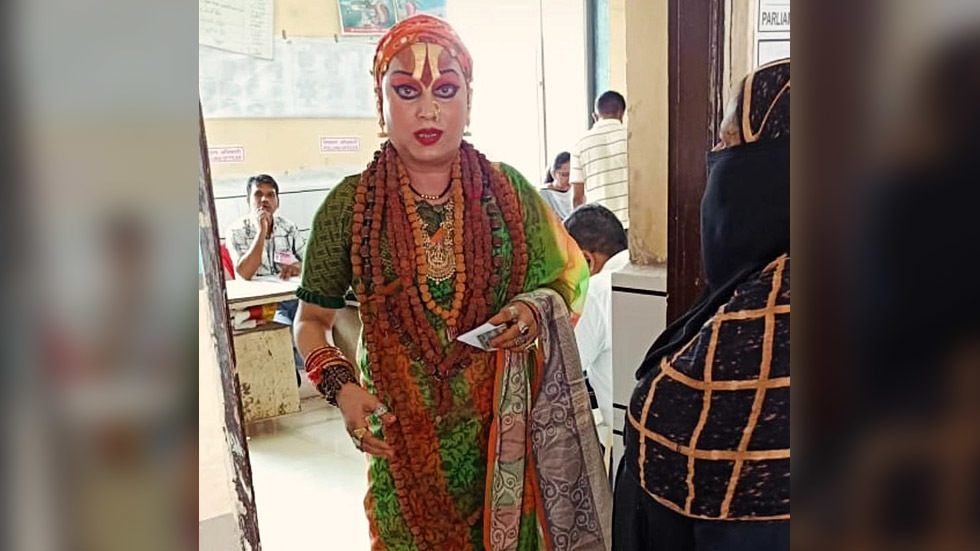
Sunaina Singh (35) filed the nomination from Dhanbad, Jharkhand, accompanied by nearly a dozen transgender people dancing and singing traditional songs. “I am Dhanbad’s daughter and have massive public support. I know their problems. I will fight for jobs for the third-gender community,” Sunaina told media persons.
This zoology graduate represents the UP-based Naqi Bhartiya Ekta Party (NBEP), and is district president of the ‘Kinnar (transgender) Mas Trust’.
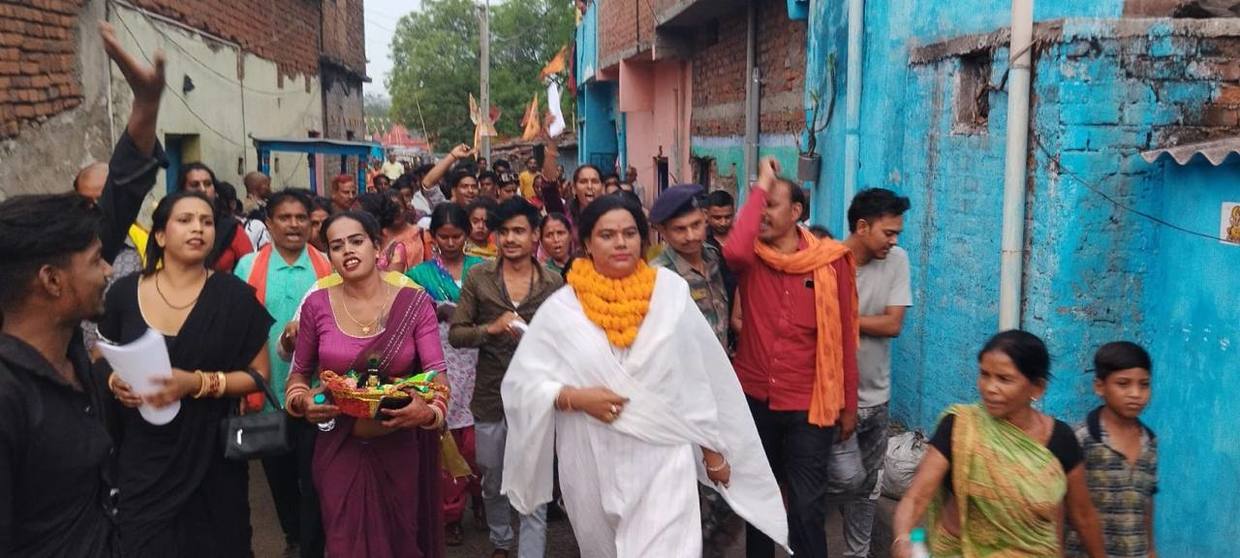
A TV actor-turned-politician
“There are educated people among us with a decent lifestyle. I want to tell society to change its way of looking at us,” Tamanna (35) told RT.
Tamanna is a TV actor who participated in, among other things, the Telugu edition of the Indian reality show ‘Big Boss’. A graduate in Computer Applications, she was the first trans woman to contest assembly elections in Andhra Pradesh in 2019.
The 35-year-old trans woman is overwhelmed with people’s love during the campaign. “I am surprised,” Tamanna says. “People come forward and talk to me.”
She sees change slowly happening. “Those who earlier used to clap hands at traffic signals (to solicit money) have now got jobs at the municipal corporation,” Tamanna says.
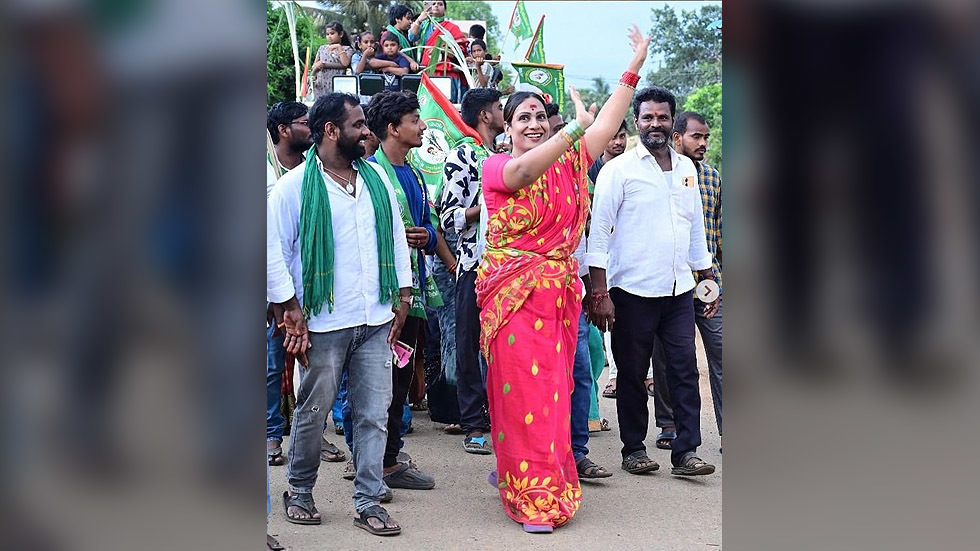
Landmark Judgment
The legacy of English jurisprudence caused problems for earlier transgender candidates. Two winners of elections – Kamla Jaan as mayor of Katni, Madhya Pradesh, in 1999; and Asha Devi (born as Amarnath Yadav) as mayor of Gorakhpur, UP, in 2000 – saw their terms ended mid-way when the courts ruled they were originally men and could not win constituencies ‘reserved’ for women. (Reservations of seats in the legislative assemblies, as well as in government jobs and educational institutions are common in India in pursuit of social justice.)
Other early winners included Madhya Pradesh electing the first transgender person, Shabnam Mausi, to the assembly in 2000. Her luck did not hold out when she fought the Kanpur seat in UP in 2012. She again contested the 2018 Madhya Pradesh elections along with five other transgender candidates.
In April 2014, India’s Supreme Court ruled that transgender persons have a right to be legally recognized according to their self-identified gender, including a third gender. Days after the judgment, a transgender person tried for a parliamentary seat. Bharathi Kannamma was the candidate from Madurai, Tamil Nadu, the southernmost state.
Then, Madhu Bai Kinnar, a transgender woman became the first openly transgender mayor in Raigarh in the state of Chhattisgarh, in 2015. In 2019, M Radha contested from Mylapore, Chennai in Tamil Nadu, and again in the 2021 assembly election with the support of crowdfunding but lost.
Five others, including Bhawani Nath Singh Valmiki of the Aam Aadmi Party (AAP), Kajal of the Bahujan Samaj Party (BSP), and independent Aswathi Rajappan also contested the 2019 polls.
In December 2022, a transgender person Bobi was elected to the Municipal Corporation of Delhi (MCD) on an AAP ticket. Devika Akka and Sudha M won in the Karnataka local body elections in 2020. Chithrapu Pushpita Laya from the community was the BSP candidate from Warangal East in Telangana in 2023.
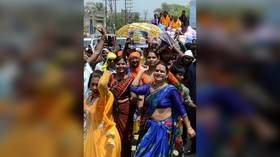
‘Don’t limit reforms to identity cards’
Kalki Subramaniam is an Indian transgender activist, a queer artist, and the founder of Sahodari Foundation, that works for the Indian transgender population. She says political parties are becoming inclusive.
“But they actually give importance to transgender people in the election manifesto only,” Kalki tells RT. “Promises are made but actions are happening slowly or not at all. The struggle is the same, though in some areas it has been better.”
She suggests that governments should focus not solely on giving identity cards and introducing schemes to the queer community, but also on providing legal rights, rehabilitating community members, and making it family-inclusive.
“Many transgender people drop out of school and hence they should get orientation towards entrepreneurship,” Kalki says. “But governments are not into it.”
Having representatives in electoral bodies, she believes, will bring change, and more people from the community should enter politics.
